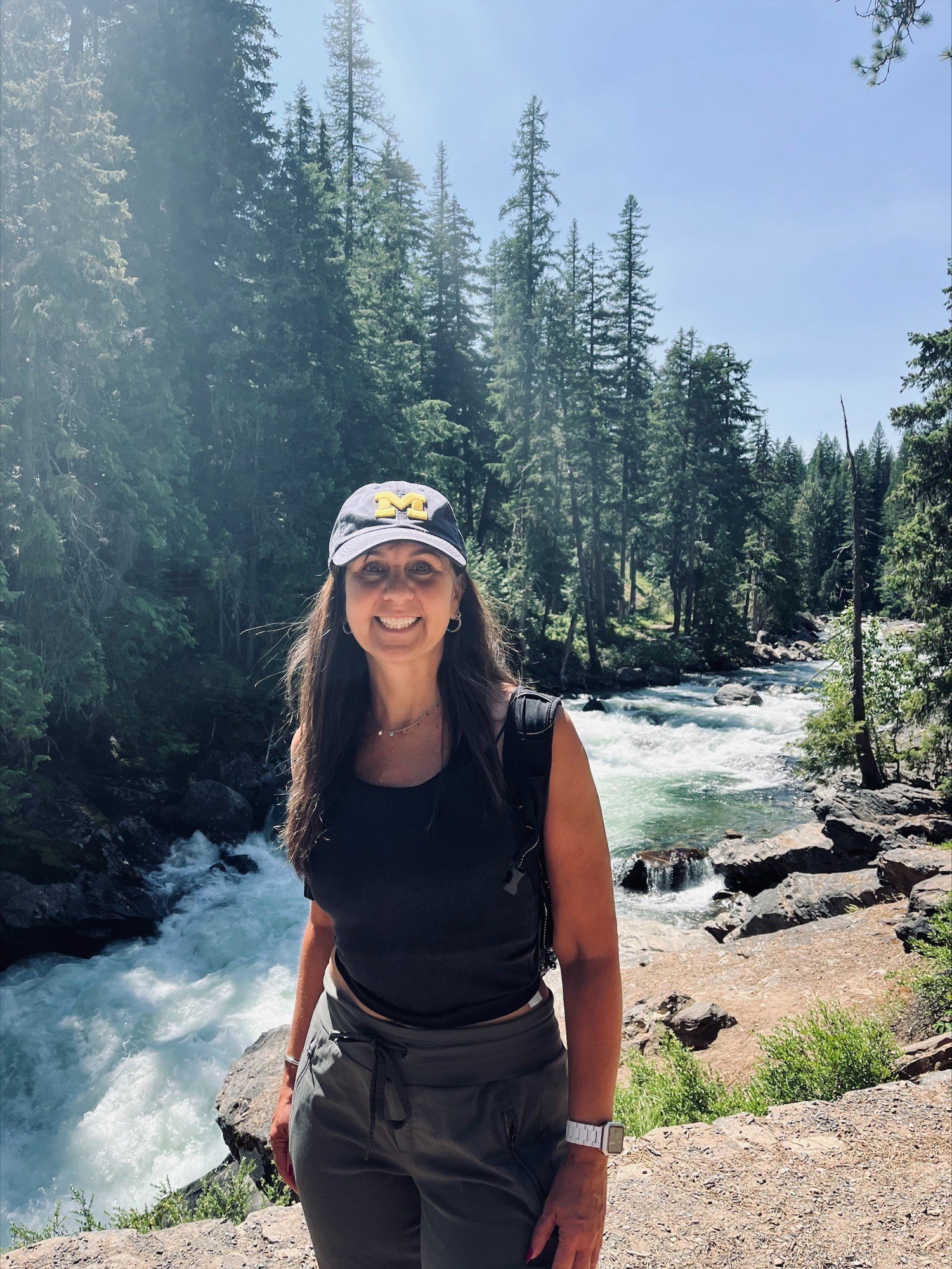
Alumni profile: Jennifer Duke
Knowing aviation was her future, Duke leveraged expertise in aerodynamics to lead operational fleet design at Pratt & Whitney

Knowing aviation was her future, Duke leveraged expertise in aerodynamics to lead operational fleet design at Pratt & Whitney
By Azul Cibils Blaquier
Jennifer Duke’s illustrious career in aerospace began, like many in the 90’s, inspired by the movie “Top Gun”. Originally from Cincinnati, Ohio, Duke hadn’t had any exposure to engineering, let alone the different fields within. But when the record-breaking film came out, Duke was hooked.

“It wasn’t just the fighter pilots,” she said. “It was the astrophysicist giving advice and telling them how to fly their jets. It was the first female I had seen in that kind of technical role with authority.”
Duke received her B.S. in Aerospace Engineering from U-M in 1992. She started working for Pratt & Whitney after graduating and gained increasing responsibility in performance system modeling and analysis. Today, she is the company’s Executive Director of Core Disciplines Engineering in Engine Design System Integration. But she started off like any other “Top Gun” fan: interested in aviation.
When she arrived at U-M, Duke knew she wanted to pursue a career in aviation. By then, she was already completely taken by the industry’s ability to connect and relate to absolutely everyone.
“As a child I probably flew a handful of times by the time I graduated college,” Duke said. “My kids now fly a handful of times every single year. I truly believe that what I do connects people, grows economies and powers freedom. I can definitely see advancement in these 30 years.”
When Duke was at U-M the computational world was just starting to emerge. She was very intrigued by the possibilities of computational analysis and spent time in the lab familiarizing herself with the computational fluid dynamics (CFD). As a result, Duke did an internship with a CFD consulting firm that profoundly shaped her career. To this day, she remains grateful to have been exposed to these cutting-edge advances during her undergraduate degree and is proud to know that U-M Aerospace continues its mission to prepare students for the newest technological advances in the field.
“I know that Professor Halow in the model-based systems engineering lab is trying to get students continually exposed to computational analysis for design. It’s great to have seen the way these studies have built-up over 30 years and have made an impact on the industry,” she said.
Apart from reveling in the incredible sense of community of U-M football games, Duke’s undergraduate education was profoundly helpful for her first position at Pratt & Whitney. The role was in system performance analysis, for which her studies had solidly prepared her. But after getting her masters in mechanical engineering with a concentration of aerodynamics and heat transfer at the University of Connecticut, she decided to veer her career towards aerodynamic design.
That’s when Duke began her 13-year-work in turbine design, where she was lead aerodynamicist for several new products and then expanded scope and became a project leader of a multidisciplinary turbine design team and then a systems lead for an operational fleet of engines. During that time, she was responsible for creating new turbine designs as well as overseeing successful implementation through the product life cycle: from the preliminary concept to detail design, all the way through FAA certification. Duke’s team was also in charge of making sure that once the product was on the field, it was safe and complied with all the inspections and regulations.
Because of the wide range of positions she has had, Duke insists that she doesn’t feel like she’s been with the same company all her career.
“I tell people that even though I’ve been with the same company, I’ve had so many different roles that it feels like I’ve been in different jobs. I’ve worked with partners and suppliers and customers across the world. I’ve traveled to Germany, France and Singapore for my job. And I still travel to different universities to stay connected with students and with the talent that we’re recruiting.”
Duke strongly believes in alumni being involved on-campus. One of the most useful ways that alumni can give back, Duke says, is by telling their story. Whether it’s through a technical or personal angle, students can learn a lot about their achievements and mistakes.
“I think it’s our job to get together with the students and share our personal experiences. And not just the positive ones. The ones we’ve learned from, too, so we can share the learning and the knowledge,” she said.

The first most important lesson Duke wants to teach students is something she herself didn’t do when she was younger: be open minded. “As a student I was very headstrong about what I wanted to do. So, I shut down some potential opportunities because I felt they weren’t good enough, even though I didn’t take the time to learn enough about them. Since then I have kept an open mind about new opportunities at Pratt & Whitney when presented to me that resulted in some exciting turns in my career.”
The second is to get involved. Not just on campus, but during your career as well. “There are all sorts of extracurricular activities you can become involved in, like employee engagement teams or recruiting back on campuses. Your alumni connection is a lifelong opportunity – take advantage of it.” she said